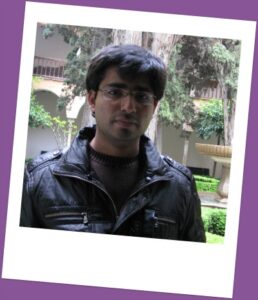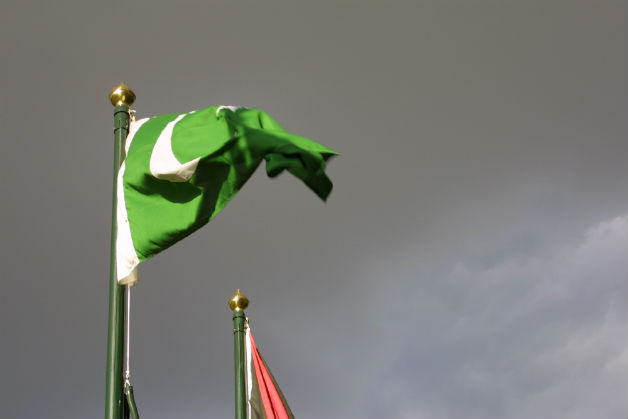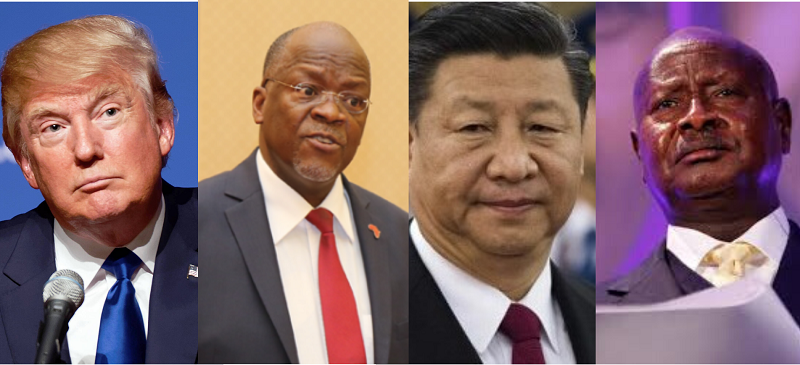"Movements of history have made the people of Pakistan"
October 23 In the international media the word Pakistan has become synonymous with terror and lawlessness, a place in which the state is incompetent, writes Aamir Aziz, a Pakistani writer now living in Leiden, in The Netherlands.
In the international media the word Pakistan has become synonymous with terror and lawlessness, a place in which the state is incompetent, writes Aamir Aziz, a Pakistani writer now living in Leiden, in The Netherlands.
Hardly a day goes by without Pakistan featuring in international headlines with news of bloodshed, natural catastrophe, social disharmony, political unrest and everything except progress, stability and quasi perpetual peace.
In the contemporary world with its fast-paced flood of information, it is a matter of sparing the audience’s time to assess the country’s real conditions.
Realists would say, “all of what you see is all what you get,” but Pakistan’s own realists have their personal narrative of the country’s international image and reality which is based upon their blood-bond and cultural rootedness with their land.
While dwelling upon the current stream of radicalism in the country, local analysts stretch their imagination as far back as 1979 when the Soviets invaded Afghanistan and the United States put guns in the hands of the Jihadis, with Pakistan and its military and intelligence apparatus used as the base for their training and logistic support.
Soviet withdrawal in 1989 and the fall of the Berlin Wall, the collapse of the Soviet Union in 1991 and the formal end of Cold War were events of profound success for the western democratic states and those former satellite states of the Soviet Union which gained independence from the Kremlin. A bulk of new nation states appeared on the atlas and the world witnessed a monumental change in global world order. Theorist Francis Fukuyama went as far as to predict the end point of humanity’s socio-cultural evolution in his 1992 book ‘The End of History and the Last Man’.
However, post-1989, Pakistan’s merry making at the retreat of the Soviets was delusionary as the preceding decade had sown the seeds of the disasters to come. The United States’ abandonment of Afghan warring factions (Northern Alliance and Taliban) in the 1990s and the battle for control in the war ravaged country between regional powers like Iran, India, Pakistan and Saudi Arabia left the country a thriving place for politically, religiously and ideologically prone young fighters from the Middle East and elsewhere to come and stage a bigger showdown against the global hegemonic rule of the United States.
The post 9/11 Pakistan has witnessed the spillover effect of violence, primarily due to three decades of war in neighbouring Afghanistan. Pakistan’s critical foreign policy decisions in both the decades of foreign invasion in Afghanistan (i.e. 1979-1989 and 2001) until present were taken during the military dictatorship of General Zia ul Haq and General Pervaiz Musharraf respectively.
Post-colonial Pakistan was introduced to drugs and weapons culture in the 1980s and a creed of Saudi-inspired Islam crept into the public space for the first time in its brief history. This is also the era when religious seminaries became a breeding ground for ideologically motivated or brainwashed fighters who were to be instruments of the administration and the power elites in the army to fulfill their interests at western and eastern fronts.
The 1990s were in turn an era of relative peace in the country with political wrangling between democratically elected governments and the establishment (which comprises of the military and the bureaucracy). The country became a nuclear power in this period, before finally facing another military coup, bringing General Pervaiz Musharraf to the helm.
The 9/11 incident and a U-turn on Pakistan’s foreign policy towards Taliban led government in Afghanistan led to an era of unprecedented violence and splits in society between the liberals and the conservatives. Numerous popular singers and sports heroes turned to religion and political debates, TV plays, music and film reflected the fanaticism in society.
Besides all this, the country has simultaneously cradled in its lap a disillusioned youth uncertain of its direction and future along with a theocratic class of young students in religious seminaries who are unwilling to embrace modernity and novel thoughts. Three parallel but incommensurable education systems are serving three different classes of the country’s half literate society. These are Urdu medium schools for lower middle class students, English medium schools for the rich and the ruling class and religious seminaries for those who can’t afford conventional schooling.
Despite enduring heavy human and capital losses and international profiling as a safe haven for the global terrorists, the country is still unclear about its role and responsibility in the region. That is why in the international media the word Pakistan has lately become synonymous with terror and lawlessness where the state is incompetent and unable to deal with its problems. The fanatic view of the “Pakistan Problem” in the international media is being solely linked with its geo-strategic location and its strive to attain strategic depth is an error in itself because the realities of Pakistan are bitterer and more serious than this.
Pakistan is a nascent nation state born out of British India in 1947, which had a huge battle with itself and the world to acclaim its identity vis-a-vis the heritage it claims as its own (i.e. the Indus river civilization). It is basically a conglomerate of tribal and feudal cultures one could associate with medieval European societies. The partition movement was spearheaded by the feudal lords and the tribal war lords and after the country’s inception it was the same class of people whose posterity rules over the country till now.
For instance eminent leaders like Khan Liaqat Ali Khan (Prime minister), Zulfiqar Ali Bhutto (PM), Mohammad Khan Junejo (PM), Farooq Ahmad Khan Leghari (President), Benazir Bhutto (PM), Nawaz Sharif (PM), Mir Zafar ullah Jamali (PM), Asif Ali Zardari (President), Yousuf Raza Gilani (PM) and an unending list of members of national and provincial assemblies belong to the feudal and industrial class of nobility. Middle class individuals can hardly dream to freely make their mark for the sovereignty of their state as it is a capital intensive business.
This is one reason why western European democratic states view Pakistani state institutionally weak and primitive because the country didn’t go through the historical phases of grinding which they experienced between phases of feudalism, city states formation, nation state formation, industrial capitalism, labour reforms, democratic rights, post industrial technocratism and award of democratic and legal rights to the citizens after revolutions and imperial wars till they became welfare states. That is why it is a frequent thing in Pakistan to hear instances of case of blasphemy, free speech, rape, women’s rights, private jails, human rights abuses and exploitation typical of feudal and tribal societies.
The colonial bureaucratic system is still in tact in Pakistan, which is powerful enough to do all kinds of political wrangling in collaboration with the military establishment. The police and judiciary rather than serving the state as its main institutions for law and order, take bribes and collaborate with the powerful people in society who have political patronage. Kinship and personal contacts based on caste and lineage, serve to sustain similar patterns in suffrage at rural areas and even in cities where people still consider sub-identities of the candidates.
Pakistan aligned itself with the United States in the early 1950s and armed forces of the country were trained and modernized to become its strongest institution which remained all powerful at all times to be politically engaged in avert martial laws and behind the scene orchestration of make and break scenes of regimes old and new through able help of its intelligence agencies.
The country’s art, film and other cultural edifices before 1979 will reveal a society basically non violent and equipped with all the necessary democratic apparatus of a vibrant state where socialism was the foremost political philosophy to inspire the masses to elect Zulfiqar Ali Bhutto as its first democratically elected prime minister in 1970.
Prior to that, there is a colonial history of the region where invaders came and invested for their vested capitalist interests. It was a semi-arid region where the British built a sophisticated irrigation system on the rivers as an investment project. The land was granted to the locals and they were also accorded nobility status and pseudonyms. The imperial plunders manufactured a peculiar anthropology of the region whose perennial effects are still lasting. Land reforms in India took the state a step farther within their democratic sphere of governance, whereas Pakistan’s 180 million people live like destitute even when they elect democratic leadership.
This is precisely because democracy is not effective unless the sovereigns’ stakes are fundamentally tagged with their subjects’ well being. When the sovereign’s origins of power are his lineage, rank and his land and wealth; it is inconceivable to expect from him loyalty to the served and total commitment to the state. Pakistan is a victim to this syndrome in the first place. This is not only incumbent upon the people in the country to crack this yolk of feudal and tribal social ethics but the international media should also recognize these facts on ground before demonizing the whole country as the nexus of terror.
These are the movements of history which have made the people of Pakistan. It will be unwise and differential to view one problem independent of the other with the selfish argument that one affects the world’s security whereas the other is principally a local issue. In actually the problem of terror and radicalism which has stigmatized the whole state and its citizens gets fixed on the vertical view of the history of the country whose unruly facts and realities were a fertile place for it to grow. Hence a candid media would be the one which shall address and lay emphasis upon the roots of exploitation and disregard for the will of the suppressed and disillusioned masses of Pakistan.
…………………………………………………………………………………………………………………
Opinions expressed in this article are those of the author and do not necessarily represent the views of the Commonwealth Youth Programme. Articles are published in a spirit of dialogue, respect and understanding. If you disagree, why not submit a response?
To learn more about becoming a Commonwealth Correspondent please visit: http://www.yourcommonwealth.org/submit-articles/commonwealthcorrespondents/
…………………………………………………………………………………………………………………




